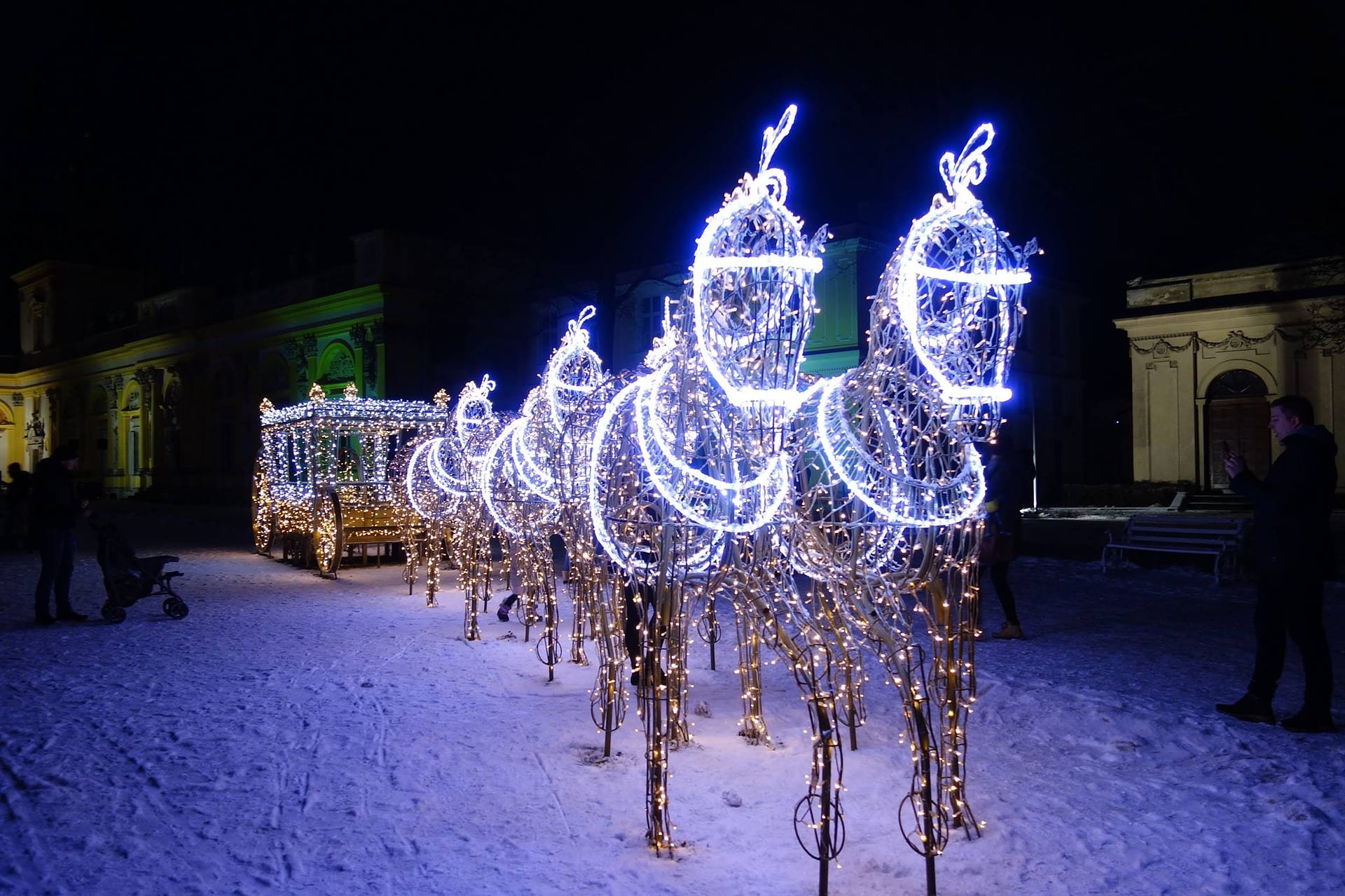
How Christmas should be
A good time to consider having your dental treatment in Warsaw is over the festive period. Christmas in Warsaw is very special, and you will find an abundance of Christmas fairs or markets. You will also find that the dental clinics are less busy at this time of the year.
Christmas fairs & markets
Starting in December you’ll find impromptu markets setting up on the plac Defilad, in front of the Palace of Culture and Science and the plac Zamkowy, by the castle.
These fairs and markets are definitely worth a visit and will make you feel like a child on Christmas Eve again! The best time to come to Warsaw if you want to enjoy the Christmas markets is in the second or third weekend of December.
Old Town Christmas Market
The much beloved Christmas Market returns to Warsaw’s Old Town starting at the end of November. The Market Square is filled with wooden stalls selling handicrafts (Christmas ornaments, amber jewellery, ceramics, carved wood decorations, and more), traditional food, mulled wine, and hot beer. A simple, but essential Warsaw winter pleasure!
The Christmas Street lighting in Warsaw around the Old Town and along the Royal Route is just beautiful!
Warsaw is an excellent location to visit during Christmas and just perfect for picking up that original and unique Christmas present at a good price too! The best time to come to Warsaw for Christmas shopping is the last two weeks in November. Unlike the UK, this is when the shopping malls first get decorated for Christmas and you will enjoy the Christmas ambiance without the mad crowds during this time.
Polish Christmas
Christmas in Poland is taken very seriously and is mainly focused on family and friends. During Advent, families get busy baking Christmas piernik (gingerbread) and start making (yes making!) their Christmas decorations. Gingerbread is made in a variety of shapes including hearts, animals and St. Nicholas figures (St. Nick is the Polish version of Santa).
Traditional decorations include the pajaki, which are handmade stars and decorated eggshells.
Lit Christmas trees are placed in most public areas, outside churches and in homes. Traditionally the trees are decorated with shiny apples, walnuts, wrapped chocolate shapes, hand blown glass baubles, and many homemade ornaments and candles. On the top of the tree is a star or a glittering top piece. In many homes, sparklers are hung on the branches of the trees for ambiance.

Gwiazdory
During Advent the “Gwiazdory,” or star carriers, wander through the towns and villages and this continues until Epiphany. Some of the Gwiazdory sing carols; others recite verses or put on “Szopki” (puppet shows), or “herody” (nativity scenes). The last two customs are developments from traditional manger scenes or “Jaselka” (crib).
Oplatek
One tradition unique to Poland is the sharing of the “oplatek”, a thin wafer into which is pressed a holy picture. People once carried these oplatki from house to house wishing their neighbors a Merry Christmas. Nowadays, the bread is mostly shared with members of the family and immediate neighbors.
As each person shares pieces of the wafer with another person, they are supposed to forgive any hurts that have occurred over the past year and to wish the other person all the happiness in the coming year.
Christmas Eve in Poland
In Poland, Christmas Eve is a day first of fasting, then of feasting. The feast begins with the appearance of the first star; there is no meat in the feast, and it is followed by the exchange of gifts. The following day is often spent visiting friends. In Polish tradition, people combine religion and family closeness at Christmas time.
Although gift giving plays a major role in the rituals, emphasis is placed more on making special foods and decorations. On Christmas Eve, so important is the first star of the night that it has been given the affectionate name of “little star” or Gwiazdka, in remembrance of the Star of Bethlehem. On that night, all watch the sky anxiously, hoping to be the first to cry out, “The star!” The moment the star appears, people start eating.
Wigilia
Families unite for the most carefully planned meal of the year, Wigilia, the Christmas supper. The Wigilia derives its name from the Latin word vigilare, which means “to watch” or keep vigil. According to tradition, bits of hay are spread beneath the tablecloth as a reminder that Christ was born in a manger. An even number of people must be seated around the table or, tradition states, someone may die in the coming year. Wigilia is a family feast. In some places an empty place setting is symbolically left at the table for the Baby Jesus or for a wanderer who may be in need, or if a deceased relative should come and would like to share in the meal.
The meal begins with the breaking of the oplatek. Everyone at the table breaks off a piece and eats it as a symbol of their unity with Christ. They then share a piece with each family member giving good wishes for the following year. There should be twelve dishes, as a symbol of the Twelve Apostles, or an odd number of dishes for good luck (usually five, seven, or nine). Poppy seed cake, beet soup, prune dumplings, carp, herring and noodles with poppy seed are universal Polish Christmas foods.
Traditionally, there is no meat eaten on Christmas Eve. Often there is compote of dry fruits. The remainder of the evening is given to stories and songs around the Christmas tree. In some areas of the country, children are taught that “The Little Star” brings the gifts. As presents are wrapped, carollers may walk from house to house, receiving treats along the way.
For detailed tourist information about Warsaw and the rest of Poland, please visit our travel partner, the Poland Travel Agency.